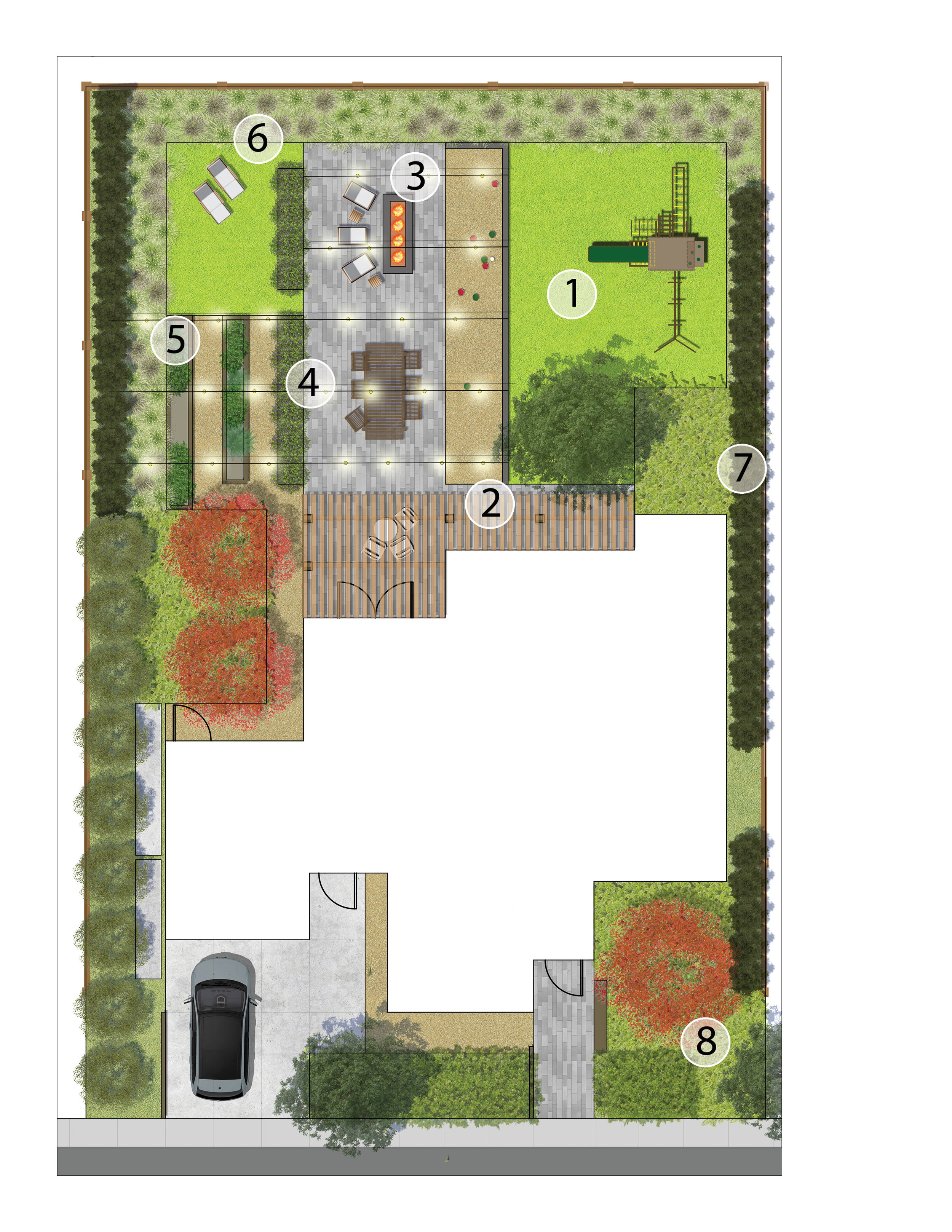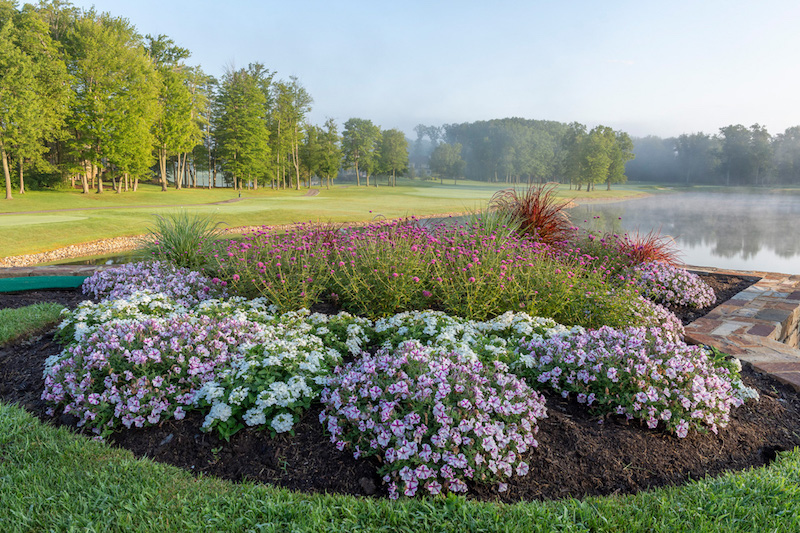The Facts About Hilton Head Landscapes Uncovered
The Facts About Hilton Head Landscapes Uncovered
Blog Article
The Main Principles Of Hilton Head Landscapes
Table of ContentsRumored Buzz on Hilton Head LandscapesLittle Known Questions About Hilton Head Landscapes.An Unbiased View of Hilton Head LandscapesThe smart Trick of Hilton Head Landscapes That Nobody is DiscussingTop Guidelines Of Hilton Head LandscapesThe Single Strategy To Use For Hilton Head LandscapesThe Of Hilton Head LandscapesHilton Head Landscapes Can Be Fun For Everyone
Type compatibility is also a significant part of unity in designone or two strikingly different forms benefit contrast and emphasis, but normally all other kinds ought to have some resemblances for a combined appearance. Texture describes how coarse or fine the surface area of the plant or hardscape product really feels and/or looks.
Examples of plants with crude texture consist of philodendrons, agaves, bromeliads, hollies, palms, and hydrangeas. Characteristics that develop great texture consist of tiny foliage; slim, strappy leaves (turfs) or tall, thin stems; little, dense branches and little branches; long stems (vines); and small, fragile flowers.
An Unbiased View of Hilton Head Landscapes
The majority of plants are average structure, in that they can not be explained as having either coarse or fine structure. Medium-textured plants act as a history to web link and merge the coarse- and fine-textured plants.
To make an area feel smaller sized, put the coarse appearances along the external border and the great textures closest to the audience. The detail of the coarse structure makes the plants show up closer and makes the room really feel smaller. The regarded texture of plants can likewise change with the distance from the plant.
Hilton Head Landscapes for Dummies
Strong colors raise the contrast and make the texture show up coarser, while soft colors can squash appearance. Hardscape with a rugged texturesuch as really harsh rocks and strong, large timberstends to make all plant product show up a lot more average textured. Developers frequently develop an appearance research (Number 8) on paper to aid decide the setup of plant materials.
Shade in plant material and hardscape includes interest and range to the landscape. Shade is the most obvious aspect in the landscape and is generally the focus of a lot of homeowners; however, it is also the most temporary component, usually lasting only a couple of weeks a year for individual plants.
The smart Trick of Hilton Head Landscapes That Nobody is Discussing
A simple description of the color wheel includes the three key colors of red, blue, and yellow; the 3 second colors (a mix of two primaries) of environment-friendly, orange, and violet; and 6 tertiary shades (a mix of one adjacent primary and additional shade), such as red-orange. Color theory discusses the relationship of colors to every other and how they must be made use of in a structure.

Comparable (sometimes called harmonious) color schemes are any type of 3 to 5 colors that are surrounding on the color wheel, such as red, red-orange, orange, yellow-orange, and yellow, or blue, blue-violet, and violet (bluffton landscaping). The shades are associated to each other due to the fact that they typically include 2 primaries mixed to form a secondary and two check out this site tertiary shades, which means they share usual homes
They have a tendency to have high contrast in between them. One of the most typical sets are violet and yellow, red and environment-friendly, and blue and orange. Corresponding shades are commonly discovered naturally in blossoms; a typical pair is yellow and violet. Color is found in the blossoms, vegetation, bark, and fruit of plants.
The Single Strategy To Use For Hilton Head Landscapes
Environment-friendly vegetation in all its various shades is the leading shade by quantity, however other shades catch focus a lot more readily due to the fact that of their high comparison to the shade eco-friendly. Shade is likewise located in buildings, rocks, pavers, wood, and furniture. The majority of colors in all-natural products, such as rock and timber, are usually muted and tend to be variants of brown, tan, and pale yellow.
Shade is a vital aspect for developing rate of interest and range in the landscape. Shades have residential properties that can affect emotions, spatial perception, light high quality, balance, and emphasis. One home of color is described about temperaturecolors appear to be great or warm and can affect feelings or feelings. Amazing colors tend to be calming and ought to be made use of in locations for relaxation and calmness.
The smart Trick of Hilton Head Landscapes That Nobody is Talking About
Great colors have a tendency to recede and are viewed as being farther away, making a room feel larger. Color can likewise be used to catch interest and direct sights.
As an example, brilliant yellow, which has the highest possible intensity, additionally has a high comparison with all other shades (frequently called a "pop" of shade) and need to be made use of moderately. A percentage of extreme color has as much visual weight as a big amount of a more suppressed or weaker shade.
Analogous (sometimes called harmonious) color design are any type of three to five colors that are adjacent on the color wheel, such as red, red-orange, orange, yellow-orange, and yellow, or blue, blue-violet, and violet. The shades are related per various other because they normally consist of two primaries blended to form a secondary and 2 tertiary colors, which suggests they share common residential or commercial properties.
The Ultimate Guide To Hilton Head Landscapes
They often tend to have high comparison in between them. The most typical sets are violet and yellow, red and environment-friendly, and blue and orange. Complementary colors are commonly discovered naturally in flowers; a typical set is yellow and violet. Shade is discovered in the blossoms, vegetation, bark, and fruit of plants.
Environment-friendly foliage in all its various tones is the dominant color by quantity, but various other shades catch interest much more conveniently as a result of their high contrast to the color eco-friendly - bluffton landscaping - https://telegra.ph/Transform-Your-Outdoors-with-Hilton-Head-Landscapers-07-03. Color is also found in buildings, rocks, pavers, wood, and furnishings. The majority of shades in all-natural materials, such as rock and wood, are generally soft and tend to be variations of brownish, tan, and light yellow
Top Guidelines Of Hilton Head Landscapes
Shades have properties that can influence emotions, spatial understanding, light quality, equilibrium, and emphasis. Awesome colors often tend to be calming and must be made use of in areas for relaxation and serenity.
The "temperature" of shades can also influence the perception of distance. Cool colors have a tendency to recede and are regarded as being further away, making a room really feel bigger. Cozy shades tend to development and are regarded as being closer, making a room really feel smaller sized. Color can also be made use of to capture focus and straight views.
For instance, bright yellow, which has the highest strength, likewise has a high comparison with all other colors (frequently referred to as a "pop" of shade) and need to be used sparingly. A percentage of intense shade has as much visual weight as a big quantity of a more restrained or weaker color.
Report this page